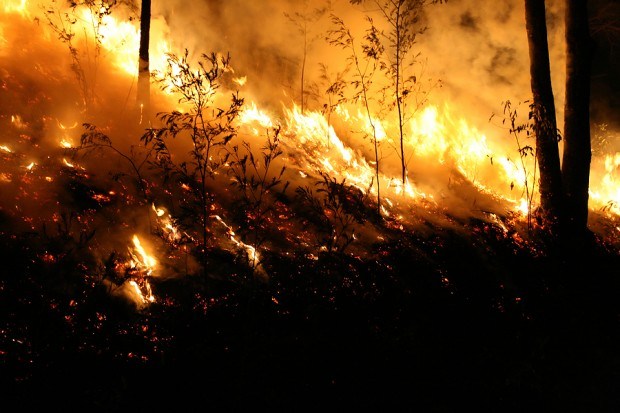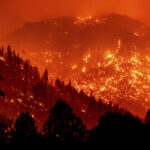Lately, when people say “wildfire,” California is probably the first state that comes to mind.
But a new report should concern people living in a few other Western states that aren’t often mentioned when the wildfire peril is considered.
Wyoming and Idaho top the list for disproportionate economic risk in terms of housing stock at risk for wildfire, according to a report out on Wednesday from catastrophe modeling firm CoreLogic.
In states like Wyoming and Idaho, a larger portion of the population is displaced at a single time, meaning recovery times are elongated, fewer local workers are available, and there are fewer temporary housing options available to outside workers “due to local populace demand,” according to the report.
The report uses as an example the 2018 Camp Fire in California, which impacted more than 14,000 homes. A Camp Fire-type event in Idaho could burn 1,709 homes, but because those 1,709 properties make up a much larger fraction of the housing stock than California, “the economic impact is worse and the cut is deeper, resulting in a much longer recovery,” the report states.
The bottom line is the cost to rebuild in those states will be far higher in the case of extreme loss.
Having Wyoming and Idaho top the list for disproportionate economic wasn’t what authors of the report expected.
“It was a surprise,” said Tom Larsen, senior director for content strategy for catastrophe modeler CoreLogic.
The two states weren’t considered high areas of frequency. They aren’t as populated as other states, like California, which was expected to be front-and-center in the firm’s latest wildfire report.
“The loss levels that we’re looking at here is an extreme loss,” Larsen said. “We didn’t come into this thinking we’ve got Wyoming and Idaho in the spotlight.”
The report breaks down the percent of housing stock at risk of wildfire in Western states, listing .10 percent of California’s housing stock at risk. Washington (.02 percent), Oregon (.04 percent) and Colorado (.05 percent) are other states in the report that are oft-mentioned when wildfires come to mind.
In Idaho, .22 percent of the state’s housing stock is at risk, and in Wyoming, .29 percent of the state’s housing stock is at risk, according to the report.
All across the Western U.S., wildfire patterns “are now a more continual fire threat,” according to CoreLogic, and record-setting droughts are contributing to increases in the number and the intensity of fires in recent years—2015, 2017, 2018 and 2020.
The report also keys in on climate change as one culprit.
“Climate change is having an impact on natural hazards all around the world—wildfires are more frequent, larger and more intense than they have been in the past. Preparing for and responding to wildfire risk to help protect home and business owners is more critical than ever,” the report states.
(This article was previously published by Insurance Journal. Don Jergler is the West Coast editor of Insurance Journal)





















 Executives on the Move at Liberty Mutual, Cowbell, W. R. Berkley
Executives on the Move at Liberty Mutual, Cowbell, W. R. Berkley  Surge of Supercharged Hurricanes Prompt Call for Cat 6 Classification
Surge of Supercharged Hurricanes Prompt Call for Cat 6 Classification  Underwriter, Actuary Fears of AI Drop; Work Needed on Collaboration
Underwriter, Actuary Fears of AI Drop; Work Needed on Collaboration 

